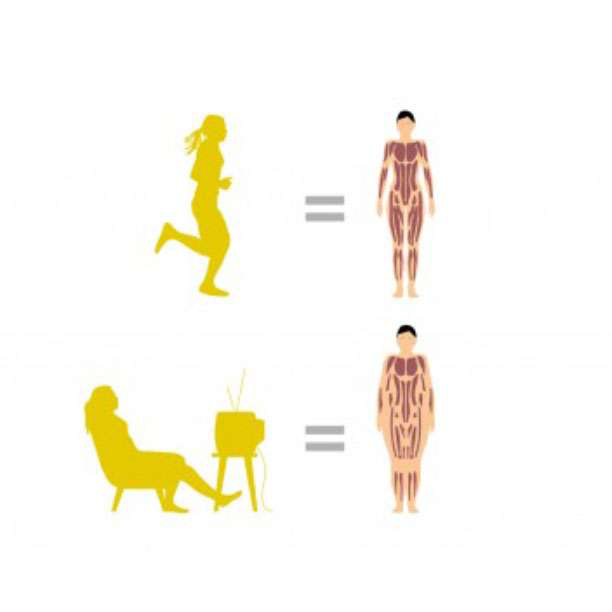‘We are what we repeatedly do. Excellence then, is not an act but a habit’ (Aristotle)
Improvements in function, fitness and health are well-known adaptations to intelligent physical activity, but they are hard won. The body is reluctant to commit the energy, protein and other resources required to grow and maintain new tissue and continuous, repeated demands must be placed on the body before it capitulates and adapts to a higher level of function. The timescale of gains is usually months rather than weeks or days, but the loss of fitness and function with inactivity is dramatic and rapid. A recent study highlights this problem (Demangel et al., 2017).
Twelve healthy subjects (average age of 32yrs) were immobilised for 3 days using ‘dry immersion’ (floating in warm bath, but separated from the water by a water-proof membrane) and the structure and function of their quadriceps muscles assessed before and after the period of immobilisation.
The results showed a dramatic decline in muscle function with a 9% loss of maximum force, a 29% loss in rate of force development, a 34% increase in relaxation time and a 31.5% loss of elasticity. Moreover, MRI and muscle biopsy analysis revealed a 2.4% reduction in quadriceps cross-sectional area, and a 10.6% loss of the fatigue-resistant, type 1 muscle fibres respectively after the 3-day period of inactivity.
This study is a powerful reminder that the human body is designed to move and that even short periods of inactivity will have negative consequences.
Being nimble is not an act, but a habit
Author
Mick Wilkinson, PhD, MSc, BA (Hons)
Northumbria University, Newcastle, England
Senior Lecturer in Sport and Exercise Science & Department Ethics Lead
References
Demangel, R., Treffel, L., Guillaume, P., Brioche, T., Pagano, A.F., Bareille, M-P., Beck, A., Pessemesse, L., Candau, R., Gharib, C., Chopard, A., Millet, C. (2017) Early structural and functional signature of 3-day human skeletal muscle disuse using the dry immersion model. The Journal of Physiology, 595 (13), 4301-4315.

